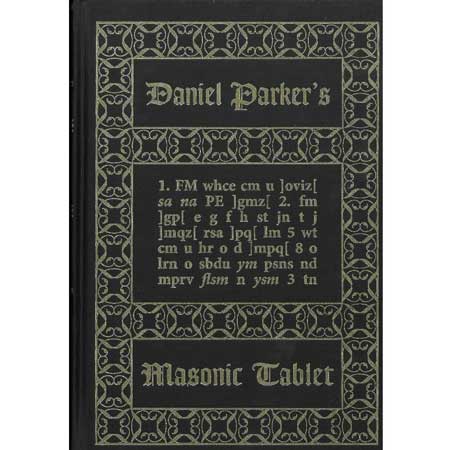Scottish Rite Store
Daniel Parker’s Masonic Tablet
Daniel Parker’s Masonic Tablet
Scottish Rite Research Society membership discount will be applied at checkout
Daniel Parker’s Masonic Tablet: A History, Decryption, and Facsimile of America’s First Cipher Ritual By Arturo de Hoyos, 33°, G.C., Grand Archivist and Grand Historian.
Beginning about 1797 Thomas Smith Webb, author of the “Freemason’s Monitor,” taught a unique form of Masonic ritual to his students, who transcribed the ritual in private books, in a one-to-three lettered cipher code. This “Webb work” became the basis for most Masonic rituals used throughout the United States. In 1822 the Rev. Daniel Parker, a zealous Mason living in Kingston New York, had printed his own clever cipher ritual, which by-passed the need for private tutors, as a supplement to Webb’s Masonic monitor. Parker’s text give us the earliest full description of American Craft and York rituals.
The introduction to this book includes a brief biography of Rev. Parker, a history surrounding the creation of his cipher, and shows how it was later used and abused by anti-Masons.
Includes a complete facsimile of the original cipher, and a full plaintext decryption of the earliest descriptions of the American versions of the degrees of Entered Apprentice, Fellow Craft, Master Mason, Past Master, Most Excellent Master and Royal Arch Mason.
Also included in the appendix, for the benefit of ritual comparison, are facsimile reproductions of the original (never before reproduced) editions of William Morgan’s
“Illustrations of Masonry by One of the Fraternity” (Batavia, 1826), and “A Revelation of Freemasonry” (Rochester, 1827).
Illustrated.
Includes an index by S. Brent Morris, 33°, G.C.
Hardbound (6 1/4" x 9 1/4") with decorative covers, two colored half title; 451 pages.
- Book Category
- Number of Pages
- Book Type
- Heredom
- 451
- Hard Cover
Share
Couldn't load pickup availability
Details
Details
More Information
More Information


